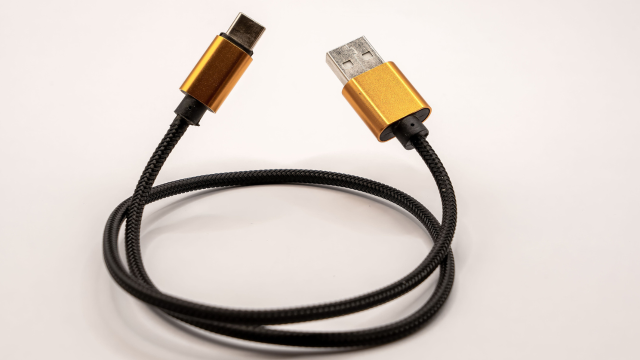USB-C is brilliant. It’s fast for charging, fast for data, small, widely used, and it’s likely to replace the lightning connector on the next iteration of the iPhone – but what will happen to its ancestor, the still-used USB-A? Will USB-C completely replace USB-A?
These days, many laptops ship without USB-A ports. To get thinner form factors, these laptops ditch the larger USB-A port and the chunky HDMI port. Meanwhile, many desktop computers still come with more USB-A ports than USB-C.
To compensate for the lack of USB-A for thinner devices, manufacturers often sell dongles that USB-A devices can connect to, such as USB sticks and external hard drives.
But… Will we get to a point, one day, where USB-A simply isn’t a thing?
I wanted to give it a ponder.
Will USB-C ever fully replace USB-A?
There’s no current plan for when USB-C will replace USB-A. USB-A is a widely used port for many gadgets, and there’s nothing broadly forcing every product to stop using it as a connector. Instead, what’s happening is on a case-by-case basis: if things need to be thinner or smaller (such as with phones or the aforementioned example of laptops), USB-C is often used. If manufacturers are catering for compatibility with other devices, such as computer peripherals or data storage drives, USB-A may be used. The many advantages of USB-C don’t manifest across every type of product, especially when compatibility is more important.
In this regard, the switching of A-to-C is a bit different to the standardisation of USB-C. While USB-A charges devices slower and has slower data transfer speeds, it has also been the go-to port for many purposes and gadgets for two decades now.
A good example of this is with external computer components. Right now, USB-A receivers service my wireless headset, keyboard, mouse, Xbox controller, and there’s also a spare slot on my PC for a USB stick (although, for wired charging, each one of these devices has a USB-C port). On desktop computers, USB-A is still the more common external data connector, although USB-C has become more common in recent years. It’s a bit of chicken and egg – will computer peripherals stop including USB-A connectors first, or will desktop computers switch to USB-C connectors only before then?
The use of USB-A goes beyond desktop computers. In my car reviews, for example, every car I’ve reviewed that has had a wired connection for Apple CarPlay and Android Auto has done so with a USB-A port, even though most newer phones in 2023 tend to come with a USB-C to USB-C cable in the box. This will likely change at some point, but although many of those cars have had USB-C ports, none of them have used those ports for phone car apps (they’re used for charging).
And then there’s the big thing that we’ve mentioned twice in this article already – USB sticks and external hard drives. Before USB-C was adopted, USB-A was widely used for data storage and transfer devices, which is a good reason for the port to remain accessible at least in some capacity (be it through a port or a dongle).
With all of these points in mind, it’s worth considering that USB-A might be sticking around for a bit longer. As I look around online, many people were expecting the switch to have happened already, but it’s 2023 and we’re still getting new devices with USB-A ports.
Why is that? Well, for many of the uses of USB connections, there’s not a terribly observable difference between the technologies. There certainly is for data transfer, and today, you can buy USB-C storage devices (USB-C sticks and external hard drives), but there’s probably not too much of a difference for wireless dongles or car projection.
Bottom line: It’s not realistic to expect a day anytime soon when USB-C is used as the main port on every device. But at some point, the devices you use in your day-to-day life may no longer come with USB-A ports (if it hasn’t happened already).
